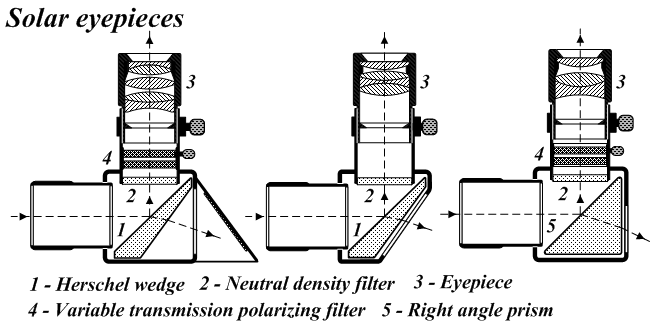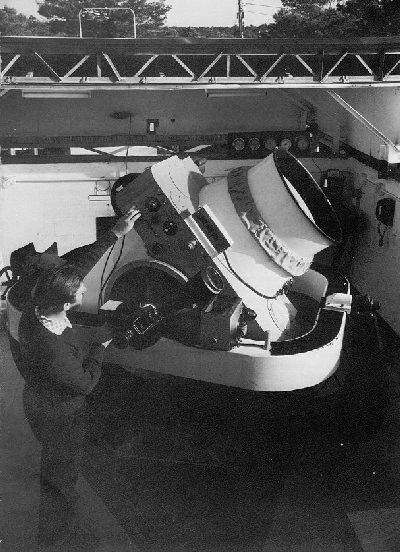|
Haleakalā Observatory
The Haleakalā Observatory, also known as the Haleakalā High Altitude Observatory Site, is Hawaii's first astronomical research observatory. It is located on the island of Maui and is owned by the Institute for Astronomy of the University of Hawai'i, which operates some of the facilities on the site and leases portions to other organizations. Tenants include the Air Force Research Laboratory (AFRL) and the Las Cumbres Observatory Global Telescope Network (LCOGTN). At over in altitude, the summit of Haleakalā is above one third of the Earths's troposphere and has excellent astronomical seeing conditions. Facilities Mees Solar Observatory The Mees Solar Observatory (MSO) is named after Kenneth Mees and dedicated in 1964. It consists of one dome with multiple instruments sharing a common mount. Pan-STARRS The Panoramic Survey Telescope and Rapid Response System (Pan-STARRS) is a pair of telescopes plus a computing facility that surveys the sky on a continual basis, ... [...More Info...] [...Related Items...] OR: [Wikipedia] [Google] [Baidu] |
Haleakalā
Haleakalā (; Hawaiian: ), or the East Maui Volcano, is a massive shield volcano that forms more than 75% of the Hawaiian Island of Maui. The western 25% of the island is formed by another volcano, Mauna Kahalawai, also referred to as the West Maui Mountains. The tallest peak of Haleakalā ("house of the sun"), at , is Puu Ulaula (Red Hill). From the summit one looks down into a massive depression some 11.25 km (7 mi) across, 3.2 km (2 mi) wide, and nearly 800 m (2,600 ft) deep. The surrounding walls are steep and the interior mostly barren-looking with a scattering of volcanic cones. History Early Hawaiians applied the name ''Haleakalā'' ("house of the sun") to the general mountain. Haleakalā is also the name of a peak on the southwestern edge of Kaupō Gap. In Hawaiian folklore, the depression (crater) at the summit of Haleakalā was home to the grandmother of the demigod Māui. According to the legend, Māui's grandmother helped him captu ... [...More Info...] [...Related Items...] OR: [Wikipedia] [Google] [Baidu] |
Faulkes Telescope North
The Faulkes Telescope North is a clone of the Liverpool Telescope, and is located at Haleakala Observatory in the U.S. state of Hawaii. It is a f/10 Ritchey-Chrétien telescope. The telescope is owned and operated by LCOGT. This telescope and its sister telescope Faulkes Telescope South are used by research and education groups around the globe. The Faulkes Telescope Project is one such group which provides observing time (awarded by LCOGT) for educational projects for UK schools and amateur astronomers. In 2013, it imaged the defunct Herschel Space Observatory. See also *List of largest optical reflecting telescopes A ''list'' is any set of items in a row. List or lists may also refer to: People * List (surname) Organizations * List College, an undergraduate division of the Jewish Theological Seminary of America * SC Germania List, German rugby unio ... * Faulkes Telescope South * Liverpool Telescope References External links Faulkes Telescope Project webs ... [...More Info...] [...Related Items...] OR: [Wikipedia] [Google] [Baidu] |
Silvering
Silvering is the chemical process of coating a non-conductive substrate such as glass with a reflective substance, to produce a mirror. While the metal is often silver, the term is used for the application of any reflective metal. Process Most common household mirrors are "back-silvered" or "second-surface", meaning that the light reaches the reflective layer after passing through the glass. A protective layer of paint is usually applied to protect the back side of the reflective surface . This arrangement protects the fragile reflective layer from corrosion, scratches, and other damage. However, the glass layer may absorb some of the light and cause distortions and optical aberrations due to refraction at the front surface, and multiple additional reflections on it, giving rise to "ghost images" (although some optical mirrors such as Mangins, take advantage of it). Therefore, precision optical mirrors normally are "front-silvered" or " first-surface", meaning that the refl ... [...More Info...] [...Related Items...] OR: [Wikipedia] [Google] [Baidu] |
National Solar Observatory
The National Solar Observatory (NSO) is a United States public research institute to advance the knowledge of the physics of the Sun. NSO studies the Sun both as an astronomical object and as the dominant external influence on Earth. NSO is headquartered in Boulder and operates facilities at two locations - at the 4-meter Daniel K. Inouye Solar Telescope in the Haleakala Observatory on the island of Maui, and at Sacramento Peak near Sunspot in New Mexico. NSO provides its observations to the scientific community. It operates facilities, develops advanced instrumentation both in-house and through partnerships, conducts solar research, and carries out educational and public outreach. Visiting the observatories The National Solar Observatory HQ is located on the campus of the University of Colorado, Boulder. It also has some staff on Maui, and Sacramento Peak. Telescopes operated by the observatory Haleakala Observatory * Daniel K. Inouye Solar Telescope Sacramento Peak ... [...More Info...] [...Related Items...] OR: [Wikipedia] [Google] [Baidu] |
Solar Telescope
A solar telescope is a special purpose telescope used to observe the Sun. Solar telescopes usually detect light with wavelengths in, or not far outside, the visible spectrum. Obsolete names for Sun telescopes include heliograph and photoheliograph. Professional solar telescopes Solar telescopes need optics large enough to achieve the best possible diffraction limit but less so for the associated light-collecting power of other astronomical telescopes. However, recently newer narrower filters and higher framerates have also driven solar telescopes towards photon-starved operations. Both the Daniel K. Inouye Solar Telescope as well as the proposed European Solar Telescope (EST) have larger apertures not only to increase the resolution, but also to increase the light-collecting power. Because solar telescopes operate during the day, seeing is generally worse than for night-time telescopes, because the ground around the telescope is heated which causes turbulence and degrades the res ... [...More Info...] [...Related Items...] OR: [Wikipedia] [Google] [Baidu] |
GEODSS
The United States Space Surveillance Network (SSN) detects, tracks, catalogs and identifies artificial objects orbiting Earth, e.g. active/inactive satellites, spent rocket bodies, or fragmentation debris. The system is the responsibility of United States Space Command and operated by the United States Space Force. Space surveillance accomplishes the following: * Predict when and where a decaying space object will re-enter the Earth's atmosphere; * Prevent a returning space object, which to radar looks like a missile, from triggering a false alarm in missile-attack warning sensors of the U.S. and other countries; * Chart the present position of space objects and plot their anticipated orbital paths; * Detect new artificial objects in space; * Correctly map objects traveling in Earth orbit; * Produce a running catalog of artificial space objects; * Determine ownership of a re-entering space object; * Inform NASA whether or not objects may interfere with the International Space S ... [...More Info...] [...Related Items...] OR: [Wikipedia] [Google] [Baidu] |
Air Force Maui Optical And Supercomputing Observatory
The Air Force Maui Optical and Supercomputing observatory is an Air Force Research Laboratory (AFRL) operating location at Haleakala Observatory on Maui, Hawaii, with a twofold mission (). First, it conducts the research and development mission on the Maui Space Surveillance System (MSSS) at the ''Maui Space Surveillance Complex'' (MSSC). Second, it oversees operation of the Maui High Performance Computing Center (MHPCC). AFRL's research and development mission on Maui was formally called Air Force Maui Optical Station (AMOS); the use of the term AMOS has been widespread throughout the technical community for over thirty years and is still used today at many technical conferences. The main-belt asteroid 8721 AMOS is named after the project. Origins Today's observatory was initiated by the Advanced Research Projects Agency (ARPA) in 1961 as the ARPA Midcourse Optical Station (AMOS). It was first proposed by R. Zirkind of ARPA's staff for imaging ballistic missile payload ... [...More Info...] [...Related Items...] OR: [Wikipedia] [Google] [Baidu] |
Air Force Office Of Scientific Research
The Air Force Research Laboratory (AFRL) is a scientific research organization operated by the United States Air Force Materiel Command dedicated to leading the discovery, development, and integration of aerospace warfighting technologies, planning and executing the Air Force science and technology program, and providing warfighting capabilities to United States air, space, and cyberspace forces. It controls the entire Air Force science and technology research budget which was $2.4 billion in 2006. The Laboratory was formed at Wright-Patterson Air Force Base near Dayton, Ohio, on 31 October 1997 as a consolidation of four Air Force laboratory facilities (Wright, Phillips, Rome, and Armstrong) and the Air Force Office of Scientific Research under a unified command. The Laboratory is composed of eight technical directorates, one wing, and the Office of Scientific Research. Each technical directorate emphasizes a particular area of research within the AFRL mission which it s ... [...More Info...] [...Related Items...] OR: [Wikipedia] [Google] [Baidu] |
Solar Corona
A corona ( coronas or coronae) is the outermost layer of a star's atmosphere. It consists of plasma. The Sun's corona lies above the chromosphere and extends millions of kilometres into outer space. It is most easily seen during a total solar eclipse, but it is also observable with a coronagraph. Spectroscopic measurements indicate strong ionization in the corona and a plasma temperature in excess of , much hotter than the surface of the Sun, known as the photosphere. The word ''corona'' is , in turn derived . History In 1724, French-Italian astronomer Giacomo F. Maraldi recognized that the aura visible during a solar eclipse belongs to the Sun, not to the Moon. In 1809, Spanish astronomer José Joaquín de Ferrer coined the term 'corona'. Based in his own observations of the 1806 solar eclipse at Kinderhook (New York), de Ferrer also proposed that the corona was part of the Sun and not of the Moon. English astronomer Norman Lockyer identified the first element unknown on E ... [...More Info...] [...Related Items...] OR: [Wikipedia] [Google] [Baidu] |
Coronagraph
A coronagraph is a telescopic attachment designed to block out the direct light from a star so that nearby objects – which otherwise would be hidden in the star's bright glare – can be resolved. Most coronagraphs are intended to view the corona of the Sun, but a new class of conceptually similar instruments (called ''stellar coronagraphs'' to distinguish them from ''solar coronagraphs'') are being used to find extrasolar planets and circumstellar disks around nearby stars as well as host galaxies in quasars and other similar objects with active galactic nuclei (AGN). Invention The coronagraph was introduced in 1931 by the French astronomer Bernard Lyot; since then, coronagraphs have been used at many solar observatories. Coronagraphs operating within Earth's atmosphere suffer from scattered light in the sky itself, due primarily to Rayleigh scattering of sunlight in the upper atmosphere. At view angles close to the Sun, the sky is much brighter than the background cor ... [...More Info...] [...Related Items...] OR: [Wikipedia] [Google] [Baidu] |
Satellite Laser Ranging
In satellite laser ranging (SLR) a global network of observation stations measures the round trip time of flight of ultrashort pulses of light to satellites equipped with retroreflectors. This provides instantaneous range measurements of millimeter level precision which can be accumulated to provide accurate measurement of orbits and a host of important scientific data. The laser pulse can also be reflected by the surface of a satellite without a retroreflector, which is used for tracking space debris. Satellite laser ranging is a proven geodetic technique with significant potential for important contributions to scientific studies of the earth/atmosphere/ocean system. It is the most accurate technique currently available to determine the geocentric position of an Earth satellite, allowing for the precise calibration of radar altimeters and separation of long-term instrumentation drift from secular changes in ocean topography. Its ability to measure the variations over time in ... [...More Info...] [...Related Items...] OR: [Wikipedia] [Google] [Baidu] |








